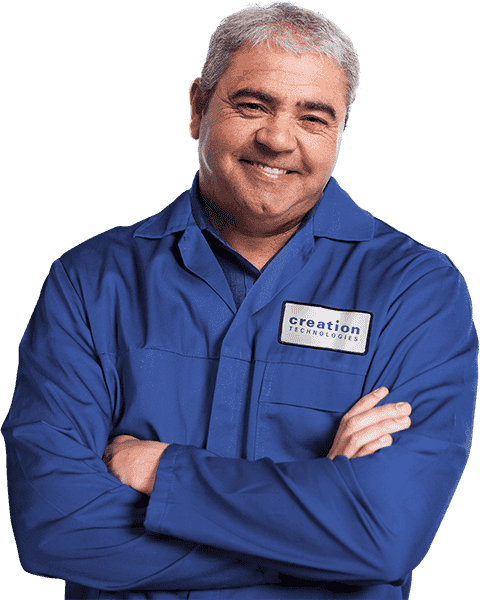Living the Dream
Developing a new product, especially an IoT hardware product, can be very exciting. The desire to start with a blank slate provides the opportunity to specify the optimal set of requirements to provide exceptional performance with robust reliability at the lowest possible cost.
And, then you wake up.
The harsh realization sets in that the new product’s requirements will be a soul-crushing, iterative exercise of compromises that, in the end, will only satisfy the most essential requirements.
Build vs Buy
Do you really need to design and build a custom IoT hardware product?
Really?
Are you sure?
If you can buy a product directly from a supplier today that meets most of the requirements, you should strongly consider this approach to reduce your time-to-market risk and to substantially lower your development costs.
However, sourcing an IoT hardware product from a 3rd party is not without its own risks as you invariably give up some element of control.
Unless you’re sourcing an industry-standard product, you will become highly dependent upon the product’s manufacturer, and potentially its distributors and resellers, too. The product quality, reliability, and cost, as well as post-sale service for support and warranty claims, should be key factors in your supplier selection criteria.
Another key consideration is the expected order delivery time. For example, if a supplier has limited stock or builds-to-order, long lead times can severely impair your ability to fulfill orders quickly for your customers.
In the worst case, the supplier may stop supplying the product at any time without advance notice which can be a nightmare.
Are You a Control Freak?
C’mon, admit it!
You’re never going to source an IoT hardware product when you can develop and build it yourself, right?
The impulse to control every minute detail of the product specification can be all-consuming. Clearly, you will have to moderate the desired level of customization to meet the timeline, the development budget, the target price, and the expected lifecycle maintenance cost goals. Unless you want to develop everything from scratch, you will need to use some off-the-shelf (“OTS”) components for your product.
Using OTS components reduces the development risk, time, and cost. However, the trade-off is that you will be dependent upon the component suppliers.
Risky Business
Ideally, you would prefer to deal with a reputable supplier with a long-established history. In theory, suppliers with brand name recognition should be ideal suppliers, but in a dynamic technology market even historically solid companies can have issues. The recent semiconductor consolidation activity will certainly drive product-line rationalization to prune similar product lines and to exit altogether ones in undesirable market segments. Furthermore, even many established suppliers only provide new product announcements when they are released to avoid sales slowdown for existing versions.
Innovation creates not only new technologies and new components but also new suppliers.
Unfortunately, new suppliers are at high risk of going out of business rapidly. Additionally, they risk being acquired by a larger competitor who may discontinue the component lines unexpectedly with short or no advance notice.
To ameliorate the perceived risk, new suppliers will often offer long-term supply stock guarantees.
But just how good is a 10-year guarantee from a company that has only been in business for two years?
If you must use a new component supplier with a short history, you should develop a contingency plan to address what you would do if the new supplier closed its doors today.
Buyer Beware
There is an abundance of inexpensive hardware components available on the worldwide market from a bevy of discounters, brokers, liquidators, and even 2 guys in a garage in Elbonia who sell their wares on global online tech bazaars such as eBay or Alibaba.
Beware! Many low-cost components available on the global market are not sold through reputable channels. Unless they are authorized distributors any quality issues will not be covered by the manufacturer’s warranty. In the worst case, the components may even be counterfeit and may not meet the quality standards of the genuine manufacturer.
Finally, even if you obtain components through legitimate international suppliers, it is highly unlikely that agreements with foreign entities can be cost-effectively enforced in case of a dispute.
If you must source components through 3rd party channels, you need to ensure a much higher level of scrutiny of these suppliers in your contingency plan.
Target Market Matters
It is crucial that you select components that are targeted at your intended market. Similar performance parts may be available for a variety of application in consumer, industrial, automotive, military, or space markets. The cost difference can be 2x, 10x, or even 100x between different grade components. Although they may be similar in appearance and the part numbers may only vary by a single alphanumeric digit, lower grade components used for applications with harsher environmental requirements will likely fail in the field.
The Circle of Life
Component lifecycles are frequently driven by the lifecycles of the products for which they are marketed. Aerospace and military-grade components have the longest lifecycles, followed by automotive, medical, industrial, and consumer.
Consumer-grade parts are targeted at high volume products that have lifespans of less than one year such as consumer electronics products including PCs, smartphones, and tablets.
The long-term availability of these components is suspect. As soon as these products are no longer in production, the supply of the cheap components incorporated in these products will evaporate quickly. Savvy suppliers, who have already amortized their development costs, will offload components to liquidators who will acquire the remaining stock at fire-sale prices. Liquidators may or may not make these parts available to the public marketplace as they seek the best financial returns for their investment. Certainly, the component availability will decrease over time and prices may quickly escalate as the remaining stock is consumed.
While the lifecycle for components for the aerospace, medical, and automotive markets is generally longer than the industrial and consumer markets, the best approach to mitigate component availability risk is different. Usually, for these markets, the regulatory requirements and qualification procedures erect significant barriers to component substitution in terms of cost and time. To overcome these barriers, it is important to build a robust alternative material list early in the development process so that equivalent components can be qualified all at once. Because higher grade components typically have smaller volumes and longer lead times, you must vigilantly monitor the component markets to secure enough stock over the product lifetime.
The Dreaded EOL
Whether you decide to source an IoT hardware product from a supplier or decide to build your own, it is necessary to review the supplier’s End-of-Life (“EOL”) policy which specifies the period of availability and the subsequent support duration after the supplier has announced the discontinuation of the product or the component.
If the supplier does not include an EOL policy in its standard terms and conditions of sale, the supplier may stop providing the product or component at any time without advance notice. Moreover, it may discontinue providing any service or support, as well.
Even when an EOL notice is provided, the response time to place last time buy orders is limited. And, there is almost always some level of price increase. While most EOL notices from reputable suppliers will be honored, be assured that in the fine print legalese of their EOL policies there are always escape clauses for the supplier. And, no sensible supplier will continue to provide a product or component at a loss over the long-term.
For IoT hardware products, you must either identify equivalent products or execute agreements with reputable, long-term partners to secure a stable product supply.
In order to mitigate EOL risk, these agreements should include:
- A license to the intellectual property (“IP”) to produce the product should it be discontinued by the OEM.
- Access the native design files so that you can continue to maintain the product.
- An introduction to existing manufacturing partners and suppliers in order to negotiate with them directly should the OEM exit the market.
It is best to negotiate this agreement well in advance of the EOL notification by the supplier. For example, an escrow agreement provides a legal mechanism by which a 3rd party can provide access to the necessary product design information in the case of bankruptcy, the sale of the company, or some other trigger event that would affect availability and/or delivery of the product.
Dealing with Reality
Products and components will not be available forever. You must diligently plan for the day when they are no longer readily available.
To ensure that you create a sourcing strategy that avoids common component pitfalls.
- Select components from vetted, reliable suppliers.
- Build an alternative material list for as many components as possible to enable flexible sourcing options and competitive pricing, especially if your product requires rigorous regulatory testing or onerous qualification procedures.
- Identify any unique or single-sourced components and create contingency plans for them.
- Review suppliers’ EOL policies for their components.
You will need to continually monitor your suppliers and the components provided by them over your product’s entire lifecycle, so you can sleep soundly at night.
A third option is to outsource the entire process to a professional third party manufacturing company experienced in Supply Chain logistics, BOM rationalization, and Value Analysis Value engineering. They can manage it all for you for less than it would take for you to put the staff and capital in place to do it yourself. Most companies find this option is well worth looking into. Learn more today by reaching out to one of our professional Business Development team members.
Contact Us
Interested in becoming a supplier? Visit our supplier page.



